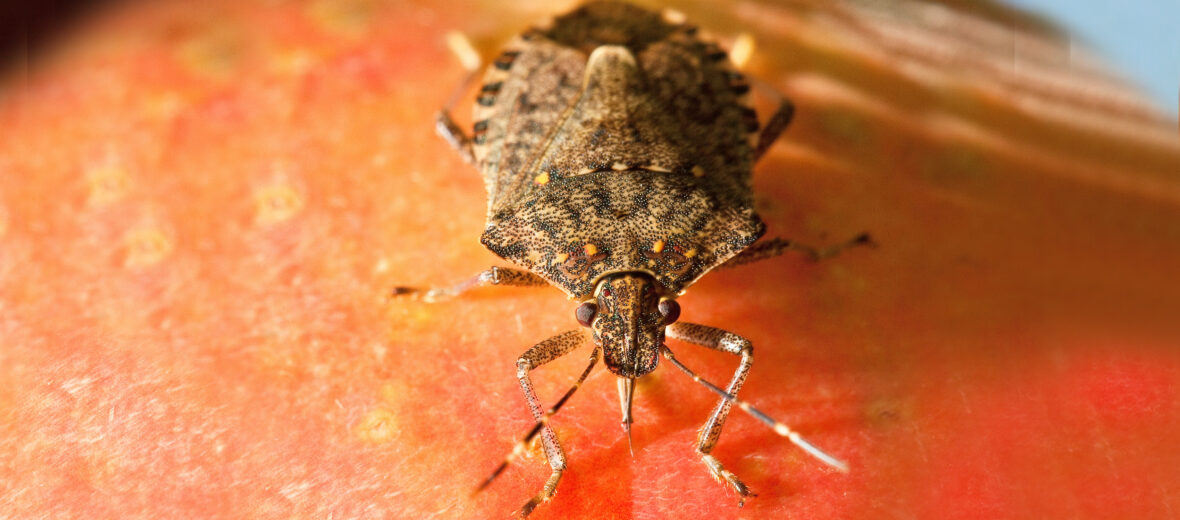
The brown marmorated stink bug is native to China, Japan, Korea, and other Asian locales. However, they have been introduced to the Americas and Europe. These insects are considered a nuisance or pest, as they cause serious damage to agricultural crops and other native plants. Due to their invasive nature and abundant populations, these critters are not currently evaluated by the IUCN.
First the Stats…
Scientific name: Halyomorpha halys
Weight: Up to 0.004 ounce
Length: Up to 0.67 inch
Lifespan: Up to 1 year
Now on to the Facts!
1.) These insects feed on over 100 species of plants, including a variety of agricultural crops.
2.) The term “marmorated” means variegated or veined.
3.) The odor produced by these stink bugs is a said to be pungent and that smells of coriander.
4.) They rely on this odor to thwart predators like reptiles, amphibians, and birds.
5.) Stink bug’s body fluids are actually toxic and cause irritation to human skin and eyes. 1 case of keratitis was reported in Taiwan.
But wait, there’s more on the brown marmorated stink bug!
6.) Brown marmorated stink bugs are sucking insects that use their proboscis to pierce the host plant in order to feed.
7.) During mating, the males will release pheromones and produce vibrational signals to signal his intent for breeding. The receptive females respond via their own vibrational signals.
Did you know…?
Approximately $37 million in apple crops were lost in just 2010 alone, due to the destruction stink bugs caused. Some stone fruit growers reported a loss of more than 90% of their crops.
8.) Females lay upwards of 28 eggs on the undersides of leaves.
9.) Females are capable of laying up to 400 eggs in their lifetime.
10.) As of 2010, 17 states had reported having infestations of marmorated stink bugs. However, they dwell in basically every U.S. state.
But wait, there’s still more on the brown marmorated stink bug!
11.) While consuming a plant or fruit, the stink bug injects saliva into their “meal”, creating a dimpling of the surface of the fruit and simultaneously rotting the material underneath.
12.) The most typical signs of stink bug damage are: pitting and scarring on fruit, a mealy texture to the harvested fruits and vegetables, and leaf destruction.
Did you know…?
Some native predators like birds and wasps have begun to take a liking to stink bugs.
13.) It is easy to tell that crops are infected because stink bugs are known for their “edge effect”, wherein they tend to infest crops up to 40 feet from the edge of the field.
14.) These insects have begun to develop a resistance to pyrethroid insecticides. Evolution at work.
15.) Oxamyl is a new chemical that has been created to thwart the onslaught of stink bugs. It, so far, has shown good results.
16.) 26,000 stinkbugs were found overwintering in a home in the U.S.
Now a Short Brown Marmorated Stink Bug Video!
Be sure to share & comment below! Also, check out the Critter Science YouTube channel. Videos added regularly!
Want to suggest a critter for me to write about? Let me know here.
Some source material acquired from: Wikipedia & IUCN
Photo credit: Stephen Ausmus – USDA



